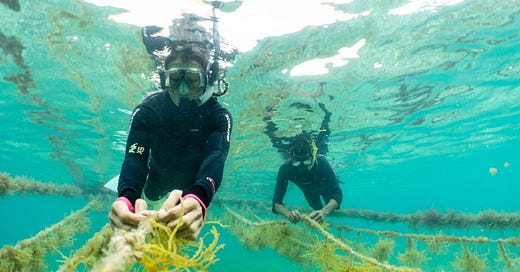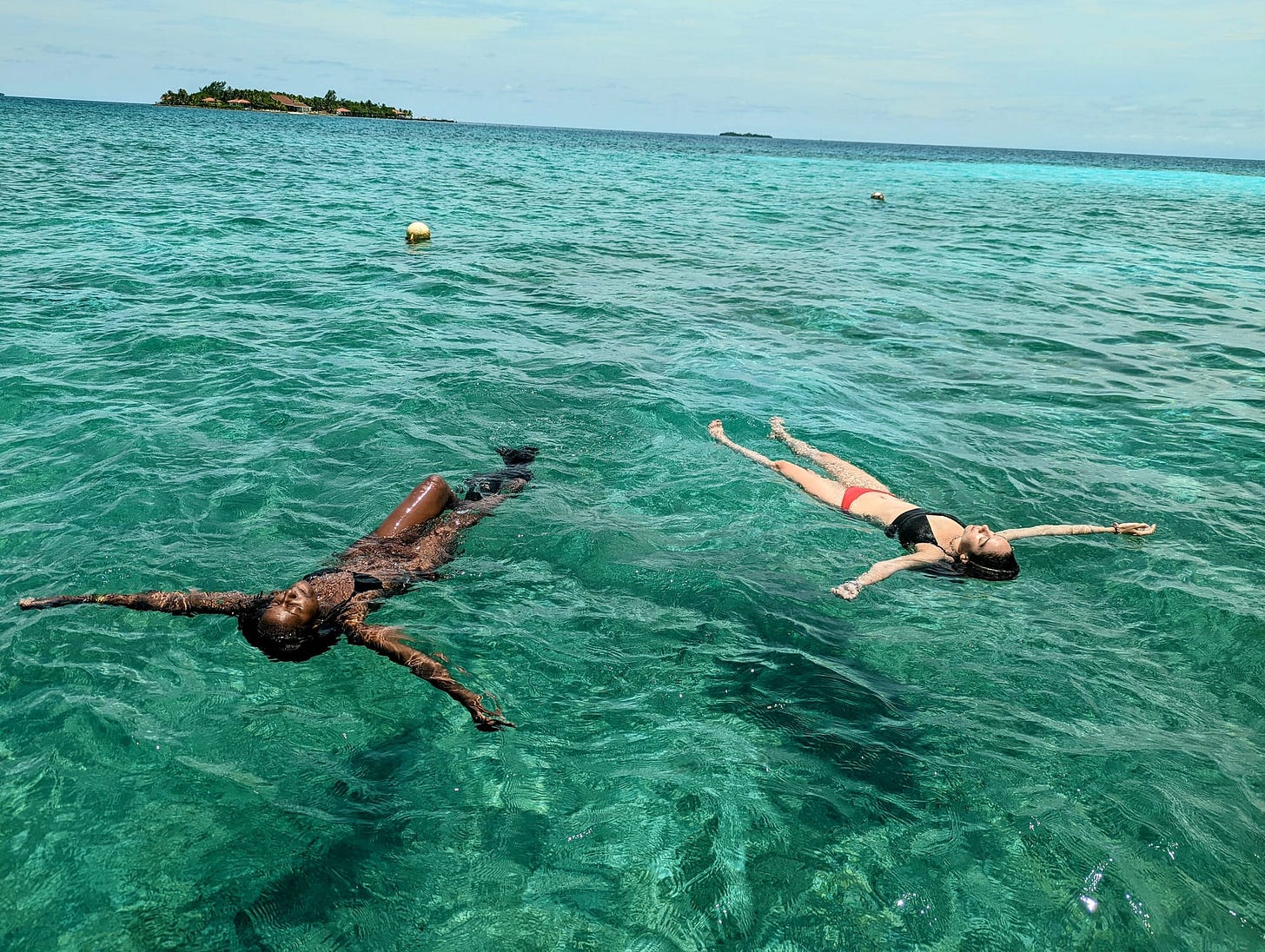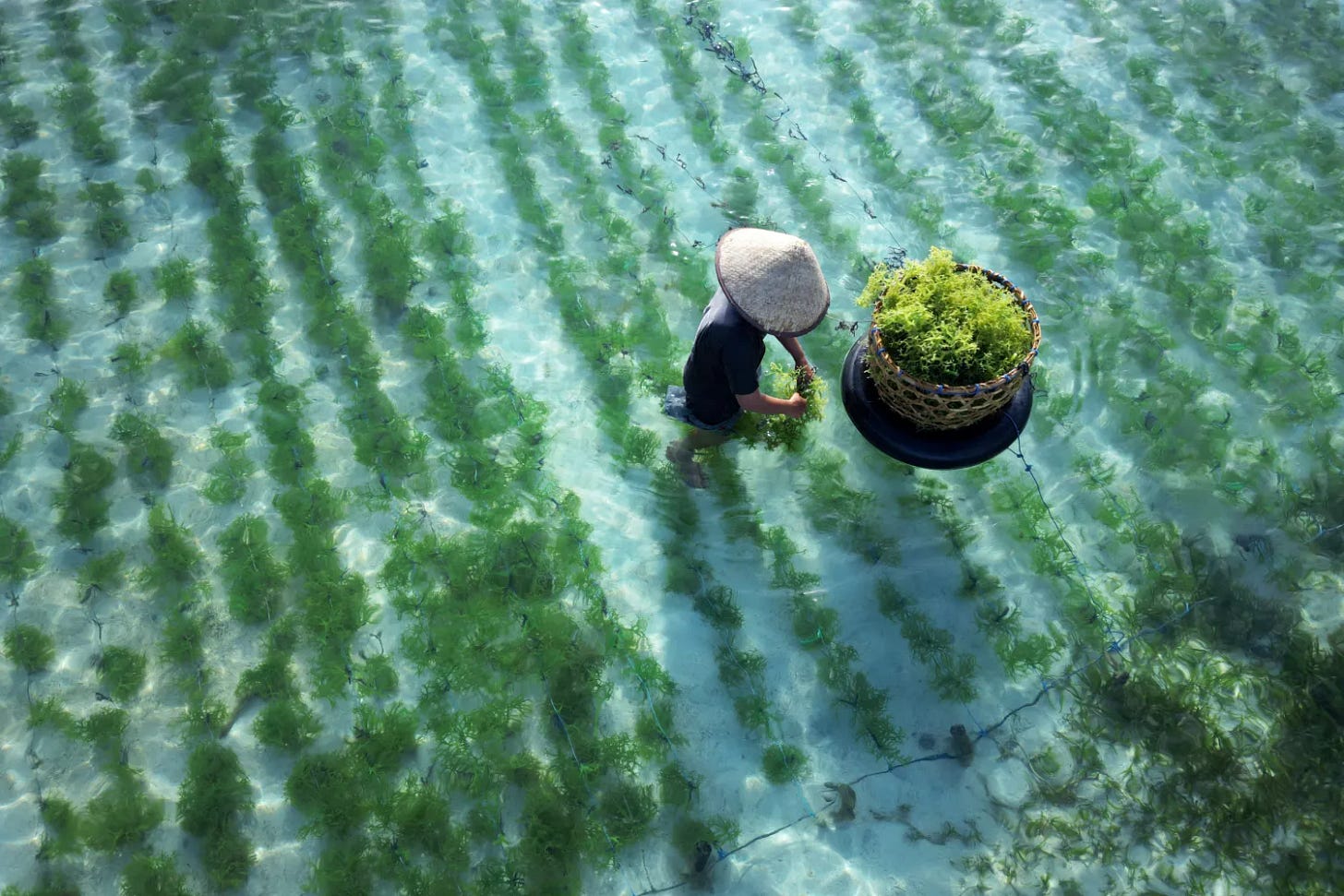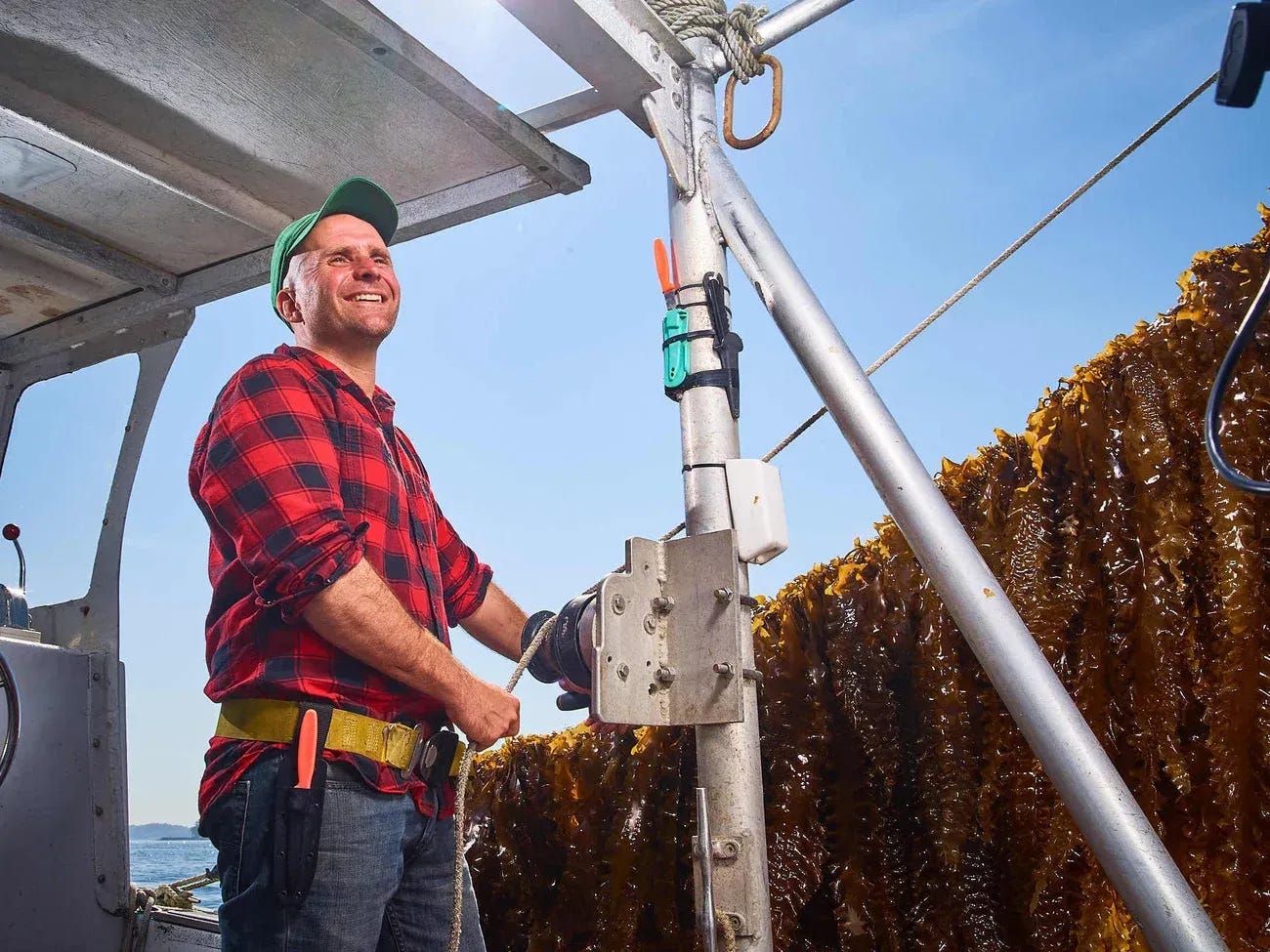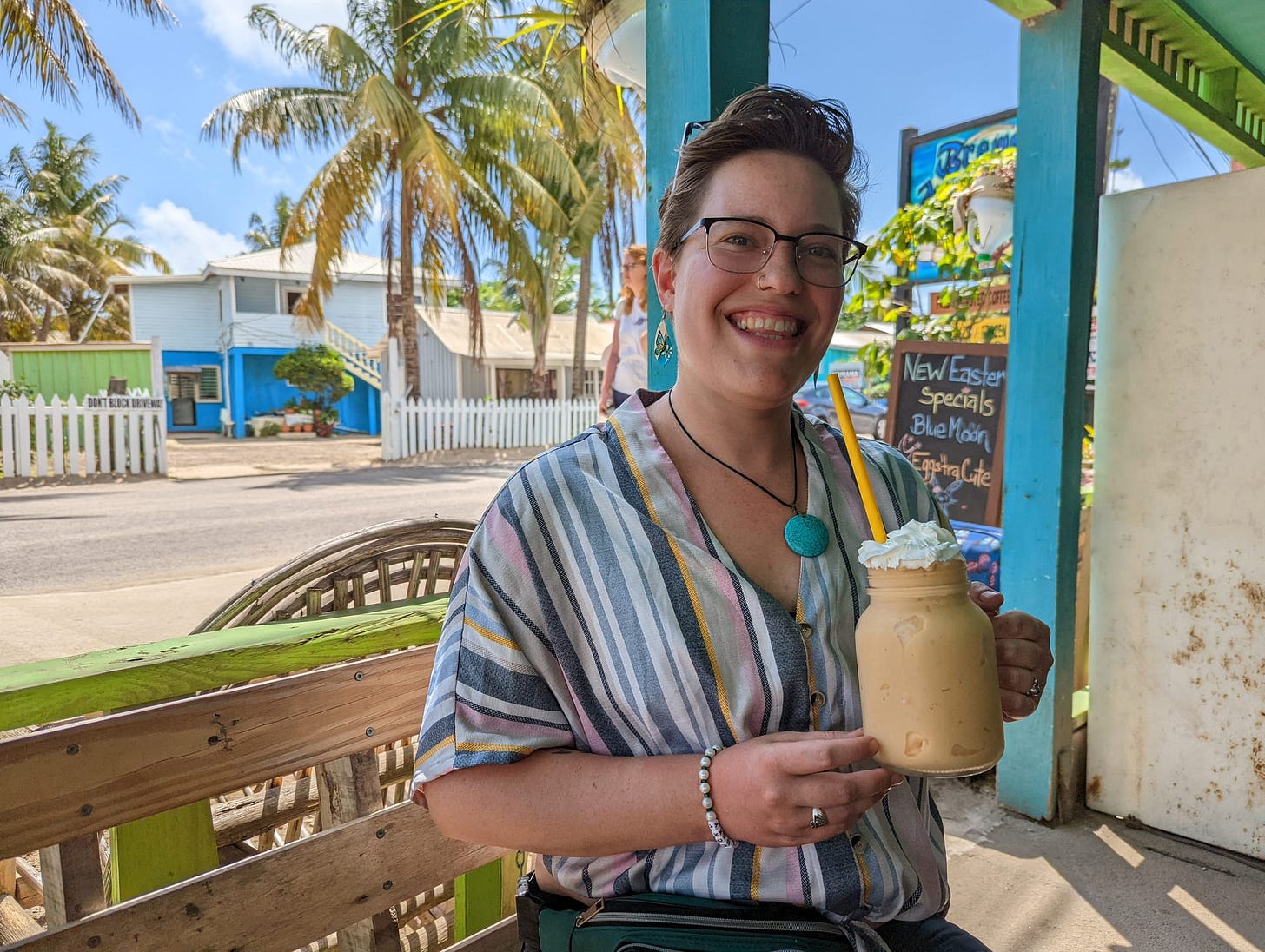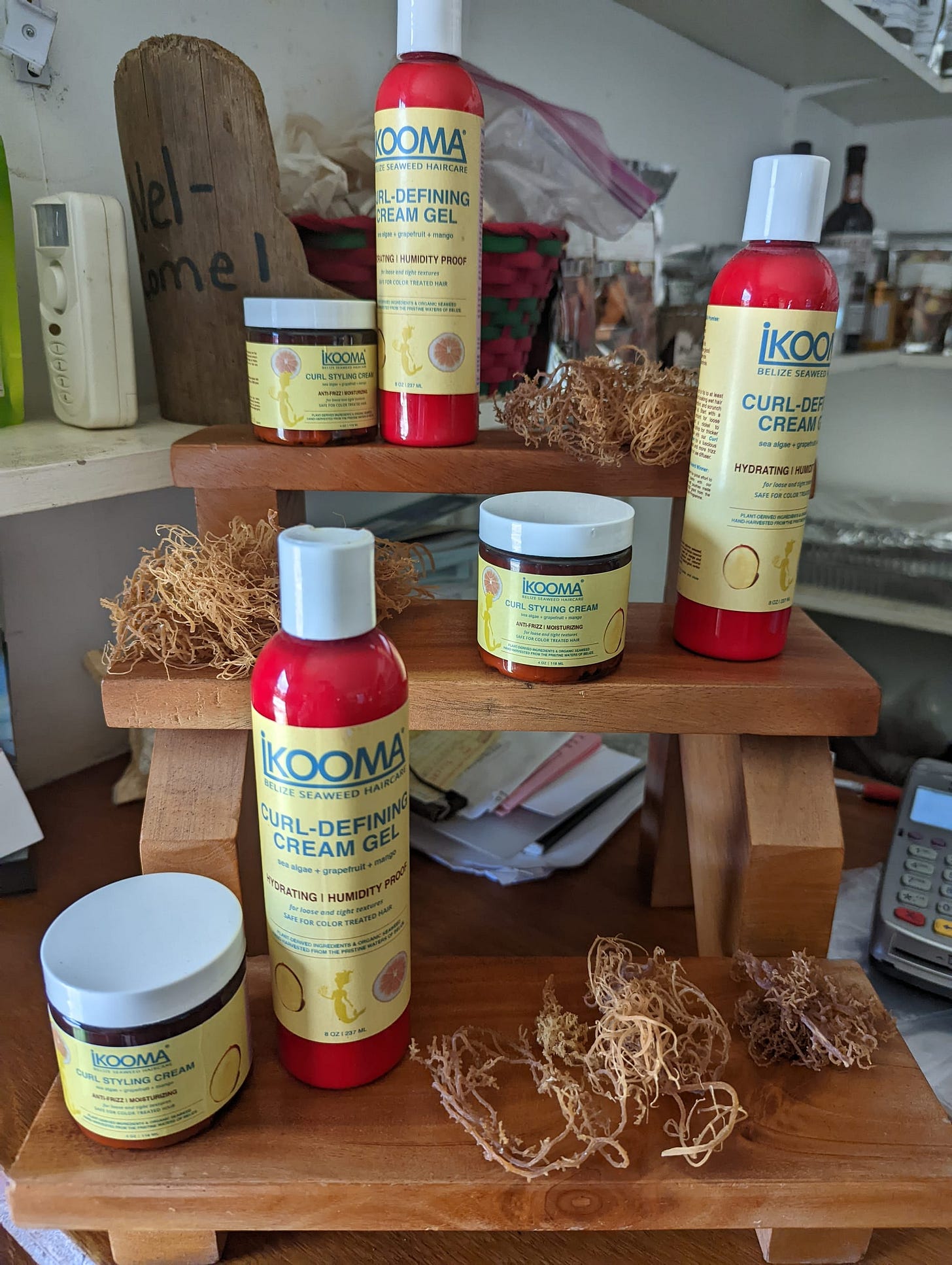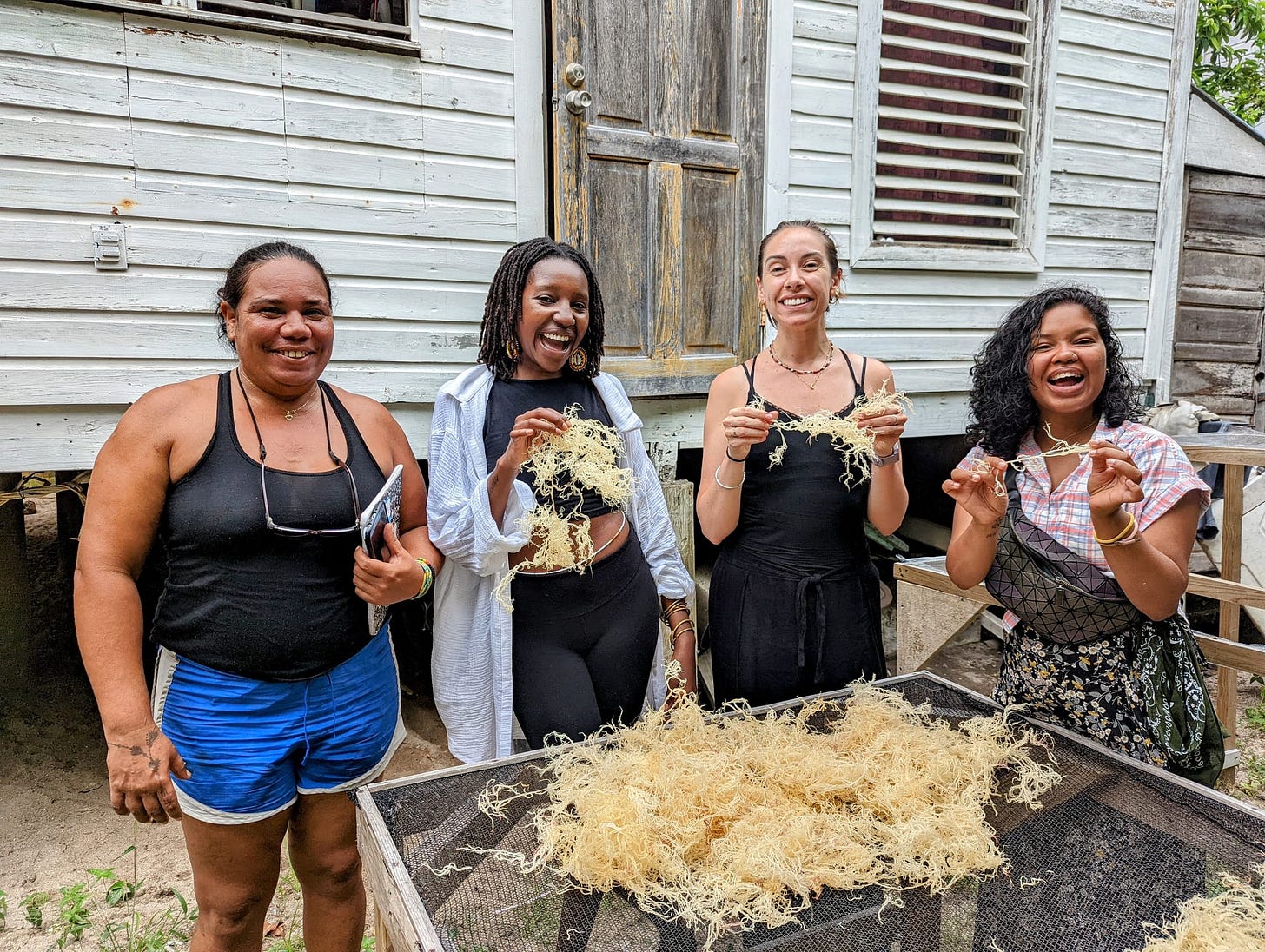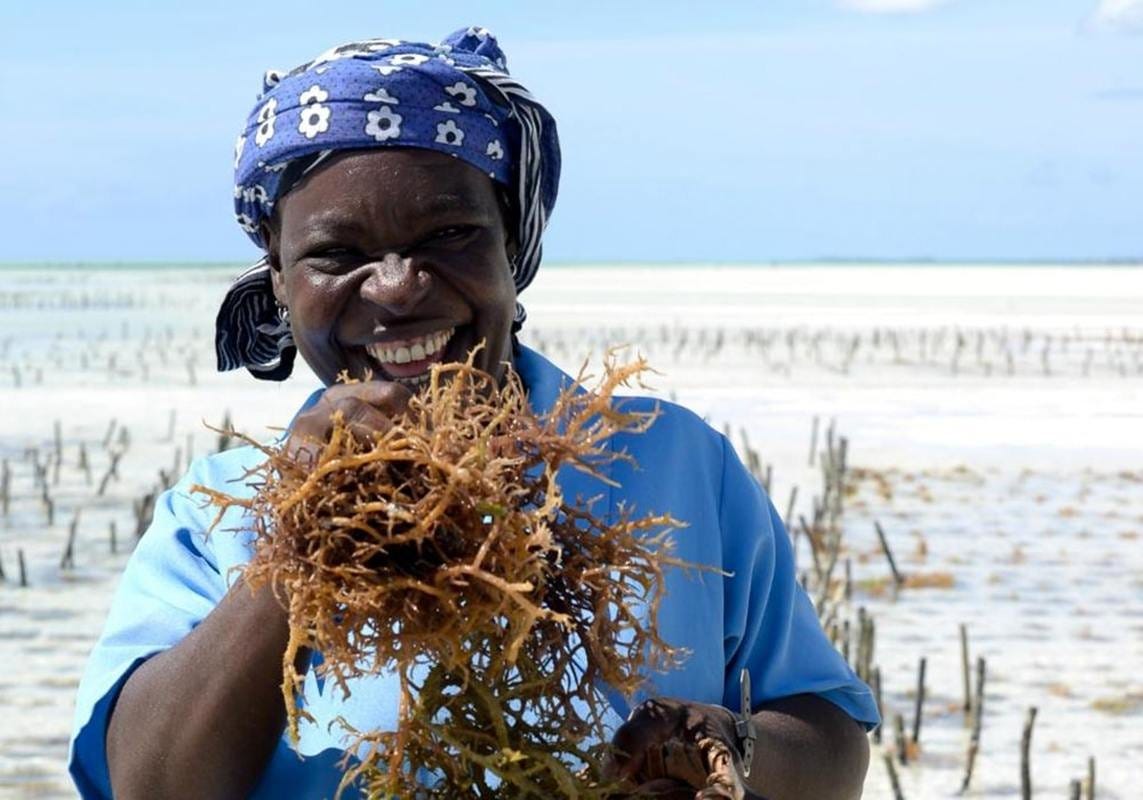From Ocean to Opportunity: The Social Impact of Sustainable Seaweed Farming
Empowering Coastal Communities and Strengthening Local Economies Across the Globe
Nurse sharks circle playfully in the brilliant blue water, sparkling in the bright Caribbean sun. Swimming nearby, I pop my head beneath the surface and enter a vibrant underwater world with colorful fish and corals. I swim through rows of ropes attached to buoys in a giant grid-like fashion. Neatly tied to the ropes are thick, chunky strands of red sea moss, swaying gently in the current.
I’m floating above a thriving seaweed farm.
Traditional seaweed harvesting has been practiced by cultures around the world for centuries. More robust methods of large-scale cultivation took root in Japan in the 20th century, paving the way for the global seaweed industry encompassing sectors like food products, cosmetics, pharmaceuticals, and health supplements.
Today, seaweed is gaining attention for its potential role as a key player in the hunt for economically viable climate change solutions. This has many turning their attentions back to traditional and environmentally-friendly methods of harvesting seaweed.
My journey is not just about an underwater garden, but a movement that’s changing lives and livelihoods. The Seaweed Revolution is sustainably growing our crops of the future.
What is Sustainable Seaweed Farming?
Seaweed farming is the aquaculture practice of cultivating and harvesting seaweed in controlled environments such as coastal waters or open ocean areas. Sustainable methods involve planting seaweed on lines or nets that are suspended in the water column. Buoys or other floating devices keep the lines afloat and anchored in place.
The process starts with seeding or attaching small pieces of seaweed onto these lines or nets.
Over time, the seaweed grows by absorbing nutrients from the surrounding seawater and sunlight through photosynthesis. Unlike land crops, seaweed doesn’t need fertilizers, fresh water, or fuels to grow, making it one of the most sustainable foods on the planet.
When time to harvest, some farmers cut the seaweed without fully removing it from the lines. This eliminates the need to reseed since the plant regenerates naturally. While some seaweed can be ready to harvest in a short six weeks, usually the process requires a few months. This still means there can be multiple harvests in a year.
Some farmers grow seaweed by wading into the water from the shore and lining it waist-deep. Others have boats and line the seaweed in deeper water columns, using a pulley system to raise or lower the lines, finding the optimal height for both sunlight and nutrients in the water currents.
Seaweed Farming Gains Momentum in the US
Seaweed is currently cultivated most prevalently in China, Philippines, Indonesia, South Korea, and Japan.
Only 2% of seaweed is farmed outside of Asia, but the nutrient-rich sea plant is gaining popularity in other parts of the world.

I first learned about the concept of farming seaweed from Bren Smith, a North American pioneer in the field. In his book Eat Like A Fish, Smith talks about his approach to regenerative seaweed farming and how he began cultivating kelp to strengthen his shellfish yields off the coasts of Maine.
Growing kelp and crustaceans together allow them to naturally benefit each other which improves the health of an ocean farm, and Smith could sell the kelp for added income. It was a clear win-win.
When I began writing about seaweed online, I featured Smith’s innovative ideas and sent him the article in a cold email. To my surprise, he responded!
Smith and I arranged a Zoom call, and I felt like I was meeting my own personal celebrity. We chatted about the industry and how he aspires to train 10,000 Americans to learn how to farm seaweed through his nonprofit GreenWave.
Their Ocean Farming Hub is a free resource that teaches anyone how they too can become ocean farmers.
The Rise of Seaweed Innovation in Belize
After returning from my swim to the seaweed farm, I relaxed on the sandy shores of the Belizean coast, sipping a deliciously fruity and refreshing seaweed smoothie.
During my visits to Belize, I learned of the profound impact this industry has – and could continue to have – on vulnerable coastal communities.
The global pandemic in 2020 showcased the challenge of relying on the volatile tourism industry for economic livelihood. Without money coming in from beach-going vacationers, coastal communities in the Caribbean turned to seaweed farming as a way to supplement family income.
In Belize, a man named Lowell “Japs” Godfrey started cultivating seaweed decades ago. His efforts led to a growing market for seaweed-related products in villages across Belize. Local vendors started making and selling seaweed smoothies to tourists on the beaches. Others began innovating on new products like nutritional supplements and haircare creams.
Hydrating Curly Locks
Like many Belizeans, Jolie Pollard’s grandfather would make seaweed smoothies from the flavorless gel formed after boiling red seaweed. One day after a salty swim in the open ocean, Pollard opened the fridge and grabbed a handful of the seaweed jelly which she began rubbing it into her hair.
Worried about how the salt water was damaging her naturally curly hair, Pollard was impressed by the smooth and shiny results of the seaweed gel. It was at that moment her haircare company, Ikooma, was born.
Pollard is one of many who are utilizing seaweed in unique and innovative ways.
Seaweed's Role in Coastal Community Revival
Another cold email (Take note, friends. Cold emails work!) introduced me to Seleem Chan, a mariculture specialist from The Nature Conservancy Belize, who collaborates with local ocean farmers to develop and promote sustainable farming techniques.
While in grad school, I wrangled together a team of five of the top MBA graduate students to offer strategic business support to the Belize Women’s Seaweed Farmers Association (BWSFA), an incredible group of passionate women making waves in Placencia, Belize.
Our team worked with the BWSFA women to build capacity and technical literacy in support of farming, processing, and productizing local varieties of red seaweeds. I met so many men and women whose lives were changed by the introduction of small-scale seaweed farming in their communities.
As an international development practitioner, I get giddy thinking about the triple bottom line impact ocean farming has. A business with a triple bottom line doesn’t just measure success in dollars made, but also how it supports people and protects the planet.
Seaweed is an environmentally sustainable crop that can provide supplemental income to small families through a myriad of innovative products ranging from food to cosmetics. Win-win-win.
And this isn’t just happening in the Caribbean.
In East Africa, Tanzania cultivates thousands of tons of seaweed annually. On the island of Zanzibar, seaweed farming, led predominantly by women, has transformed coastal communities. The practice has empowered thousands of women by providing them with their own source of income, enhancing their economic independence and status within the community.
Support Small-Scale Seaweed Farmers
Have I sold you on the Seaweed Revolution yet? Whether you’re convinced or still want to learn more, here are some ways to rally behind the movement:
Subscribe to my newsletter: Join me on my journey of discovery, exploring the impact, innovations, and communities behind ocean farming. Your donation directly supports on-the-ground initiatives I’m a part of around the world.
Donate to GreenWave: Support Bren Smith’s mission to train US-based regenerative ocean farmers in the era of climate change.
Buy More Seaweed: Buy seaweed products that have been sustainably grown by seeking out ASC-MSC certifications or supporting local farmers in your area.
I believe in building a thriving, sustainable future – one seaweed farm at a time. Your support of this newsletter fosters a healthier planet, people, and economy. Thank you!
Sign up for Sowing Seas
All about ocean farming & sustainable seaweed solutions
No spam. Unsubscribe anytime.


